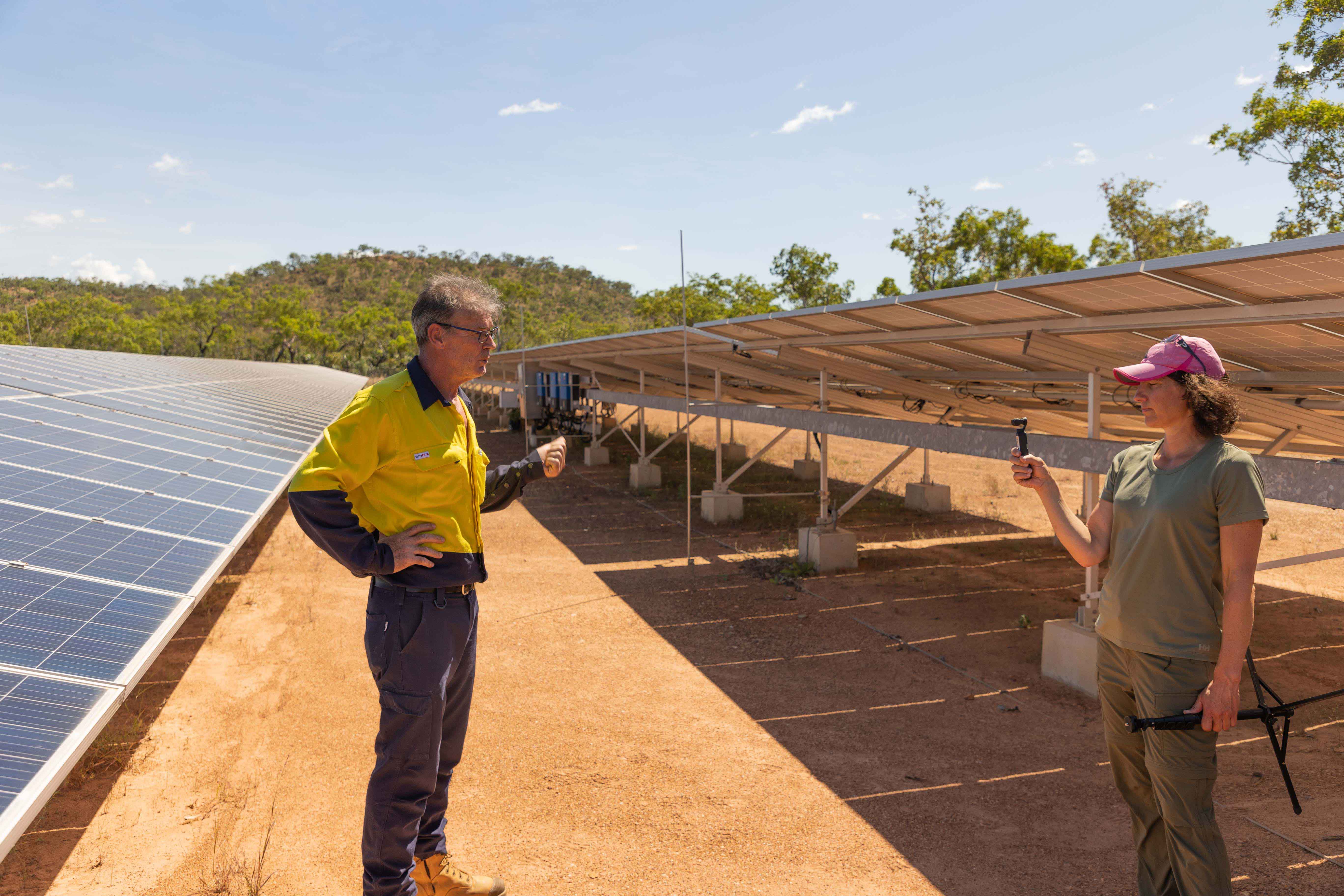Daly River Solar Microgrid Powers Remote Australia Community

Daly River high-penetration solar microgrid.
May 25, 2023
Australia’s Northern Territory is home to almost 250,000 people and its areas is about twice the size of Texas. Power and Water, as the name suggests, is the one utility that supplies power, water, and sewage services to all communities across the 548,100 square mile territory, including 72 remote communities.
On a recent visit to her home country, ACEP’s Amanda Byrd visited the territory’s largest city, Darwin, touring local energy research laboratories, the Power and Water headquarters, and Daly River – the territory’s first high-penetration solar powered microgrid, with Jeff Adams from Power and Water.
The Daly River microgrid was funded through SETuP, or the Solar Energy Transformation Program, itself co-funded by the Australian Government through the Australian Renewable Energy Agency, and the Northern Territory government. The program was established to install 10 MW of solar power across 25 communities in the Northern Territory. Payback is accomplished through diesel fuel savings. The project has achieved its goal of generating 50% of its actual annual energy from solar in kilowatt-hour production and in fuel savings.
The power station supplies 10,000-11,000 kW-hr daily to the local community and surrounding area of Nauiyu Nambiyu, an Indigenous community with a population of around 350 and home of the Malak Malak people. The surrounding area has an additional population of around 150 people. The community is 230 km south of Darwin. The main local industry includes timber production, a local school, and fishing tourism for barramundi, a local sportfish that lives both in the ocean and saltwater river. And, also, the ever-present crocodiles are a drawing card for tourism.
The Daly River microgrid features a 1.5-MW diesel power plant with one each 460-kW, 580-kW, and 800-kW diesel gensets (a genset is the engine that drives the generator to power the equipment). The cooling systems for the generators include a large open-air fan to move air to the exterior of the building, and water-cooling jackets. Diesel fuel is stored in four 72,000-liter (18,000-gallon) bulk storage tanks and distributed to day tanks for daily use.
The plant also features an 800-kV 1,900 volt-amp battery energy storage system, and a 1-MW solar photovoltaic array. The diesel power station itself represents how most energy is generated in remote communities across the vast Northern Territory.
The solar farm and the battery storage allow the microgrid to operate with diesel turned off daily, though there is seasonal variation. In the wet season, the system runs diesel-off for 11-13 hours per day, and in the dry season, the system runs diesel-off for 14-16 hours. The variation is due to rolling clouds and load changes due to residents’ use of air conditioning.

ACEP's Amanda Byrd (right) interviews Jeff Adams from Power and Water at the Daly River 1-megawatt solar photovoltaic farm.
The vast distances to remote communities make large fuel deliveries and storage important. The diesel is imported from Singapore, and Darwin receives and stores all the fuel for the territory. Fuel costs to end users range between AUD $1.50 - $2 per liter, which is equivalent to USD $4 - $5.30 per gallon. This price includes delivery. Fuel is delivered by road train, a common sight in outback Australia. A road train is a tractor trailer with three or more trailers. Six to eight weeks’ worth of additional storage is always on hand for unforeseen events like hurricanes, flooding or other natural disasters.
Other resources were looked at in the Northern Territory for renewable energy, but extremely high seasonal rainfall fluctuations make hydro power difficult, and wind resources are not consistent enough in the area.
Future high-penetration solar microgrid installations are planned in the Northern Territory, including on the Tiwi Islands.


